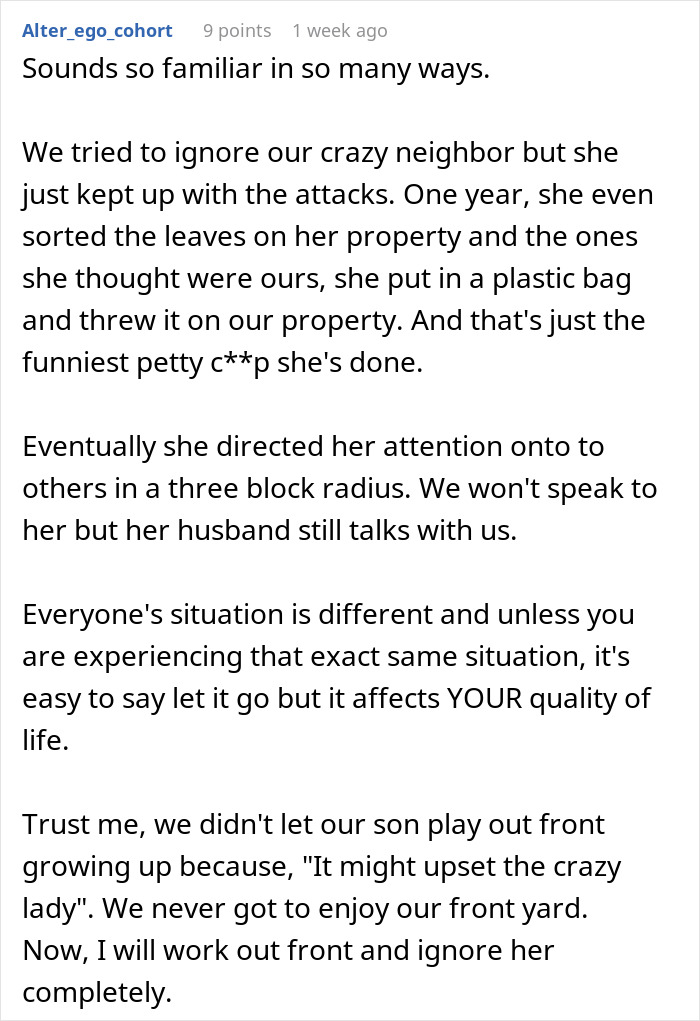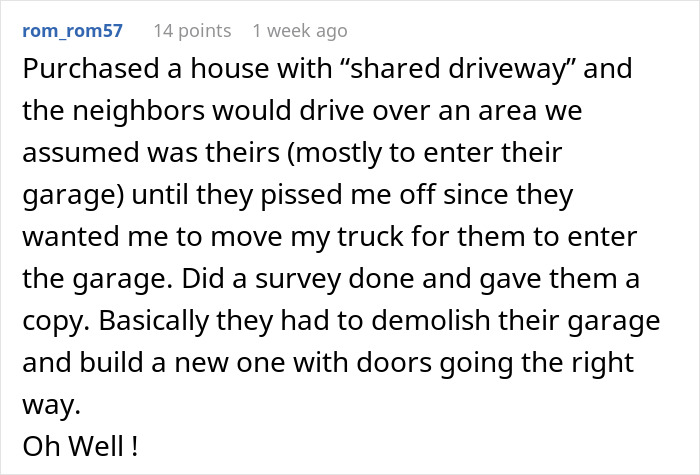Friendliness between neighbors is evidently in decline. Probably because over half of people don’t know the residents who are dwelling nearby and even fewer strike up a conversation with them.
This couple was too living blissfully unaware of their elderly neighbor until they struck her nerve by chasing away her lawn boy out of their driveway. From that point on, she made their life difficult with a saga of petty events. The couple kindly shared them online, as they found her behavior absolutely hilarious.
Scroll down to find the full story and a conversation with social psychologist, management consultant, executive coach, and adjunct professor, Crystal Clarke, Ph.D., and social scientist, organizational consultant, innovator on conflict resiliency in community, and founder of Figure It In, Ruth Diaz, Psy.D., who kindly agreed to share a few tips on how to resolve neighbor conflicts.
Some people live blissfully unaware of their neighbors

Image credits: Kindel Media / Pexels (not the actual photo)
This couple tried doing so too, until they accidentally struck an elderly neighbor’s nerve
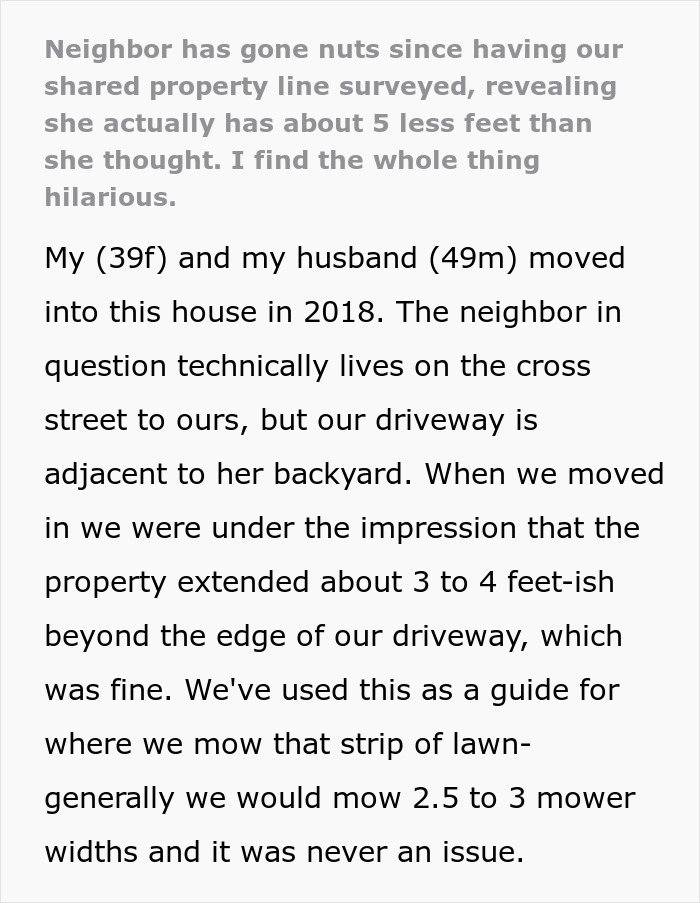



Image credits: Luis Negron / Pexels (not the actual photo)





Image credits: Tima Miroshnichenko / Pexels (not the actual photo)




Image credits: Josh Withers / Pexels (not the actual photo)



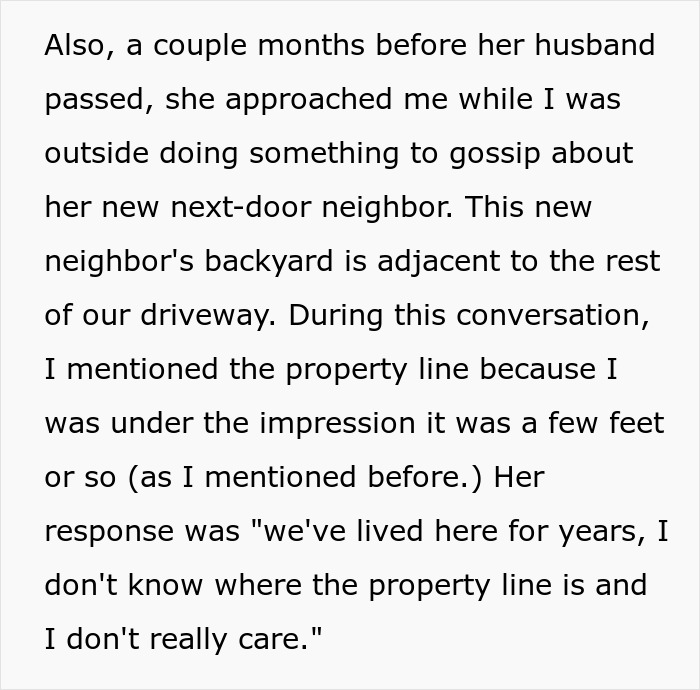

Image credits: evening_tao / Freepik (not the actual photo)
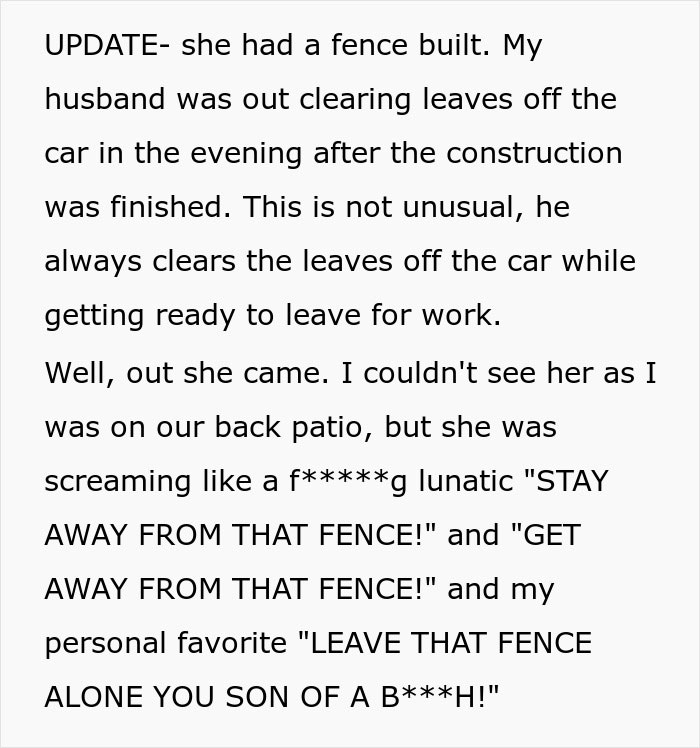


Image credits: xxooxxxooxx
Conflict between next-door residents often arises when they feel like their personal space and security are being threatened
Bored Panda was lucky enough to get a hold of social psychologist, management consultant, executive coach, and adjunct professor, Crystal Clarke, Ph.D., and social scientist, organizational consultant, innovator on conflict resiliency in community, and founder of Figure It In, Ruth Diaz, Psy.D., who helped us to scratch the surface of an age-old question, “Why do neighbors often have complicated relationships?”
Clarke suggests that conflict between next-door residents often arises when they feel like their personal space and security are being threatened. “As humans, we have a natural desire for a sense of safety, security and control, and when our physical or emotional boundaries get threatened or violated by our neighbors, conflict can occur,” she says.
While Diaz proposes that our territorial nature might be at fault. “When we approach our neighborhoods from a tribal mindset, our territorial instincts often take over, which can make us hyper-aware of boundaries and “ownership” over shared spaces. This mindset fosters division, as we tend to see neighbors as separate or even competitive,” she explains.
To avoid disagreements, people try to hide from their neighbours, with 65% reporting doing that. Roughly 46% of individuals had a dispute with a neighbor in the past so it’s no surprise that they might want to blend with the background to minimize the chance of conflict.
Avoiding neighbors or building physical boundaries might be just a temporary solution
However, Clarke notes that avoiding neighbors or building physical boundaries might be just a temporary solution. “Building a fence often does not address the underlying cause of conflict and can sometimes worsen the relationship between neighbors. If the goal is to create healthier relationships with our neighbors, healthy and respectful communication would be more effective than building a fence, which may create more isolation and tension between neighbors,” she suggests.
Diaz seconds the importance of addressing underlying issues with neighbors. “The DOT Model emphasizes that genuine conflict resiliency comes from addressing the underlying emotions driving that need for distance. By engaging with our own emotions and understanding our neighbors’ perspectives, we can orient ourselves towards empathy rather than separation.
Instead of reinforcing divides, try creating moments of authentic interaction, whether it’s through shared spaces or activities, where you and your neighbors can connect. This kind of intentional engagement builds trust, helping neighbors feel respected without needing to isolate themselves,” she explains.
If a little spat is unavoidable with the next-door residents, the first step in the conflict resolution plan should be respectful and kind communication, proposes Clark. “Although emotions may be high, try to remain calm and kind in your approach.When communicating, practice “listening to understand.”Oftentimes we believe we are listening but may listen in defensive mode. Try to consider your neighbors position and listen for their fears or worries in conflict resolution,” she suggests.
The end goal here is to find common ground or compromise. “Living with others (whether in your home or as neighbors) requires finding common ground. If both parties can consider the needs and comfort of one another, then compromise may be possible,” she adds. When respectful communication fails to work, Clarke further suggests calling on a neutral third party that can help. “In situations where physical safety is a concern, third-party intervention may be necessary. While communication is useful, it’s important that the environment feels safe to do so.”
To ensure that conflicts don’t occur in the first place, Diaz suggests having structured and recurring neighborhood conversations. “These gatherings could include an intentional first hour of open discussion about concerns, fears, or hopes, followed by a relaxed, playful activity, such as a game night. By mixing purposeful conversation with enjoyable bonding, neighbors can get to know one another’s values, experiences, and challenges in a way that deepens their connection. Such rituals reinforce the “village mindset,” where neighbors feel seen, valued, and engaged with one another’s lives, fostering trust that carries through even the most challenging conflicts.”
Some readers suggested ways the couple can get back at the elderly neighbor










While others were concerned for the neighbor
